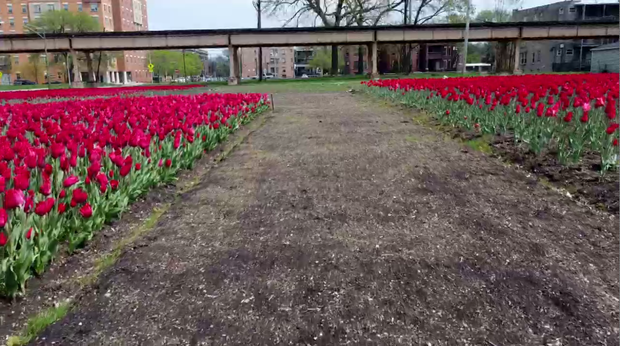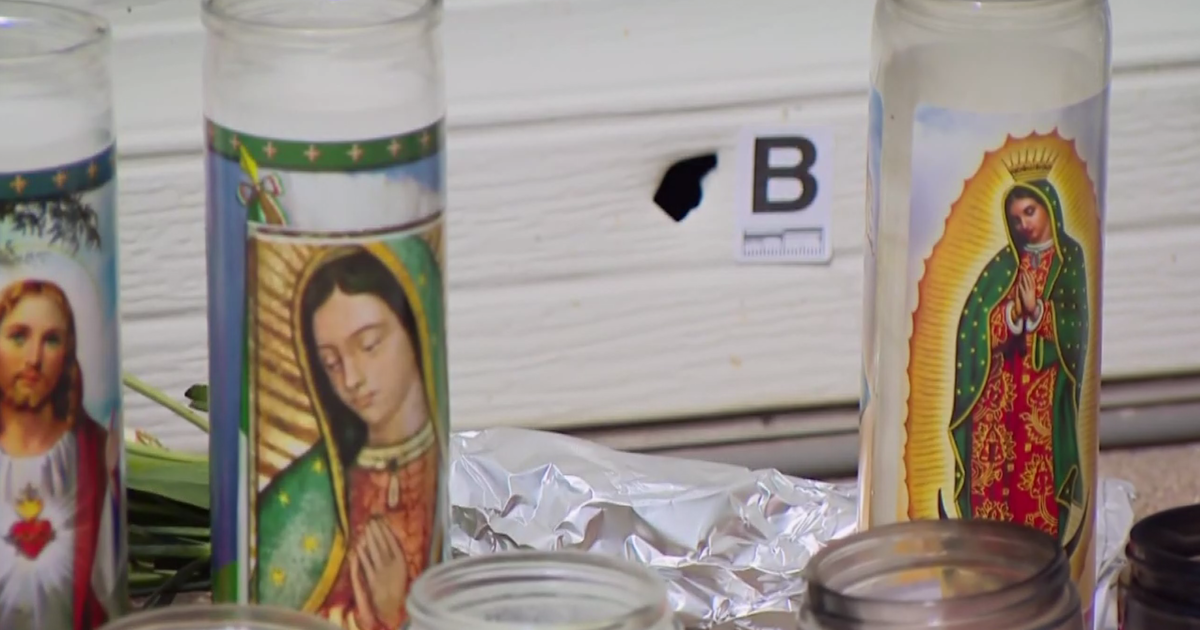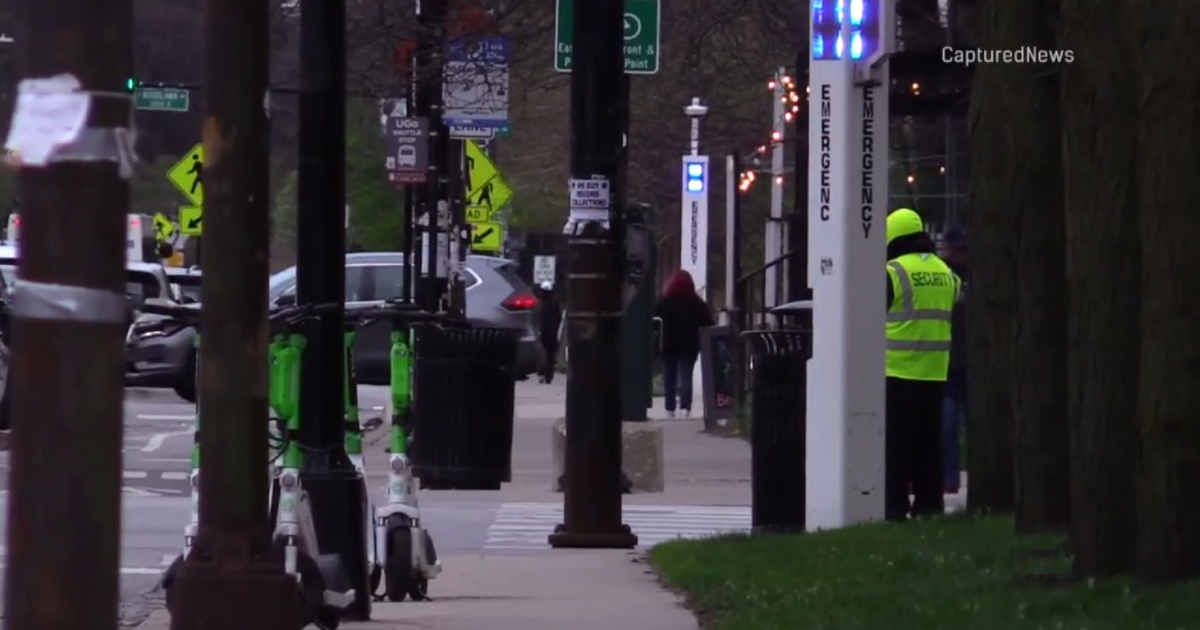Redefining Redlining brings fields of tulips to vacant Washington Park lots where homes once stood
CHICAGO (CBS) -- A neighborhood on the South Side of Chicago is blooming.
The colorful floral display in the Washington Park neighborhood catches everyone's eye – and an artist hopes it makes people think about how inequity can change our landscape.
As CBS 2's Noel Brennan reported Wednesday, the red tulips that make up the display are planted in vacant lots in the area of 53rd Street and Prairie Avenue – some city-owned, others privately-owned. Artist Amanda Williams is turning those vacant lots into a statement.
"The kind of oddity and the density of it - I hope helps spark people's imaginations about what else is possible," Williams said.
Even a vacant lot can be inviting if it's vibrant. And these vibrant vacant lots came about after Williams planted an idea to bring beauty to them.
"A love letter to beauty and joy," Williams said. "There's a power in the fact that it's not going to be here for long."
The artist just had to play gardener and wait for spring.
"Got 500 of my closest friends to join me planting these tulips," Williams said.
A total of 100,000 buds sprouted together.
"Things can be fun and temporary, but also deliver a pretty powerful message," Williams said.
All of the flowers are now blooming where buildings once stood.
"These were apartment buildings," Williams said as she showed us some larger tulip-filled lots near the Green Line tracks with a pathway in between. "So these would have been – you can imagine you'd walk up that middle."
The flowers fill the footprints of 21 apartment buildings and single-family homes – all long since torn down. Some of the demolitions date back to the 1960s and 70s.
"I think the last ones were demolished sometime in the 90s," Williams said.
This was a direct result, Williams says, of redlining.
"Areas that had Black people, immigrants, were deemed hazardous or not lend-worthy – and so that really does literally shape the landscape that we see," Williams said.
Williams added that many people do not understand the continuing impact of redlining.
"It's become a household term," she said. "People understand it, but I don't think people understand that it exists still today. It's incredibly hard for Black people to get loans, to receive credit."
Where there is vacancy, Williams sees value.
"This is a project I spearheaded last fall called Redefining Redlining," Williams said. "These residents can look down and see that footprint, or that shape, and really imagine what used to be here - but also what might be here in the future."
A vacant, vibrant lot is full of possibility.
"I think we can't underestimate the importance of beauty and joy and a little bit of hope right now in society," Williams said.
Williams was inspired to use tulips for the installation because of the value they once held in 17th century Holland. Back then, tulip bulbs sometimes sold for the price of homes.
"One of the earliest boons and busts was tulip bulb speculation in the Netherlands in the 1600s," Williams said.
Williams hopes the installation will be an inspiration, and make for a recognition of social injustice.
"On the one hand, it's so massive that you just can't imagine that there was anything else besides vacancy," Williams said. "On the other hand, you know by the kind of systematic way that things tend to never reach certain communities in the city that this is very real and present."
This Saturday, there will be a block party celebrating the blooming art installation.
For more information on Redefining Redlining, follow this link.




